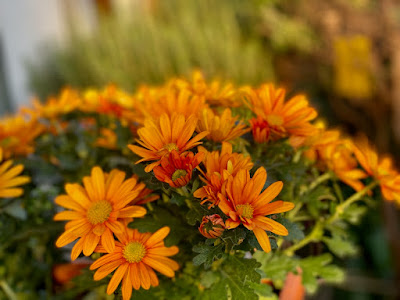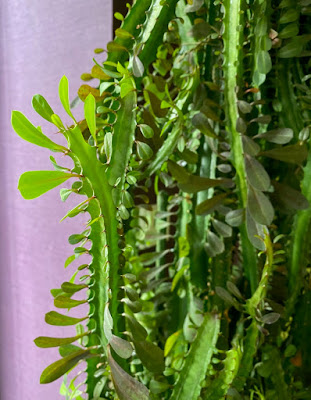°
Yes, the colours in the autumn are different. As the light.
The name Aster comes from the Ancient Greek word ἀστήρ (astḗr),
meaning "star", referring to the shape of the flower head. (Wiki)
Heliotropium arborescens, the garden heliotrope or just heliotrope,
is a species of flowering plant in the borage family Boraginaceae,
native to Peru. (Wiki)
In Finnish tuoksuheliotrooppi.
Germans have named it Vanilleblume.
Someone hiding in the salvia bush!
The name Salvia ("salviya") derives from the Latin salvere ("to feel well and healthy,
health, heal"), the verb related to salus (health, well-being, prosperity or salvation),
referring to the herb's healing properties. (Wiki)
Petunia is genus of 20 speciesof flowering plants of South American origin.
The popular flower of the same name derived its epithet from the French,
which took the word petun, meaning "tobacco," from
a Tupi–Guarani language. (Wiki)
Chrysanthemums, sometimes called mums or chrysanths, are flowering
plants of the genus Chrysanthemum in the family Asteraceae. They are native
to East Asia and northeastern Europe. (Wiki)
A rose is a rose is a rose.
...was written by Gertrude Stein as part of the 1913 poem "Sacred Emily",
which appeared in the 1922 book Geography and Plays.
"things are what they are"
OMG, check all the notes to this theme:
https://en.wikipedia.org/wiki/Rose_is_a_rose_is_a_rose_is_a_rose
Ja tämä pitää vielä laittaa tänne muikkariksi, nimen takia:
PYLVÄSTYRÄKKI.
Ohhoh.
Finnisch für Anfänger:
PYLVÄSTYRÄKKI = Dreikantige Wolfsmilch / Euphorbia trigona,
African milk tree, cathedral cactus, Abyssinian euphorbia,
and high chaparal (😆)
PYLVÄS = Säule / column
TYRÄKKI = Wolfsmilch / spurge







Ei kommentteja:
Lähetä kommentti